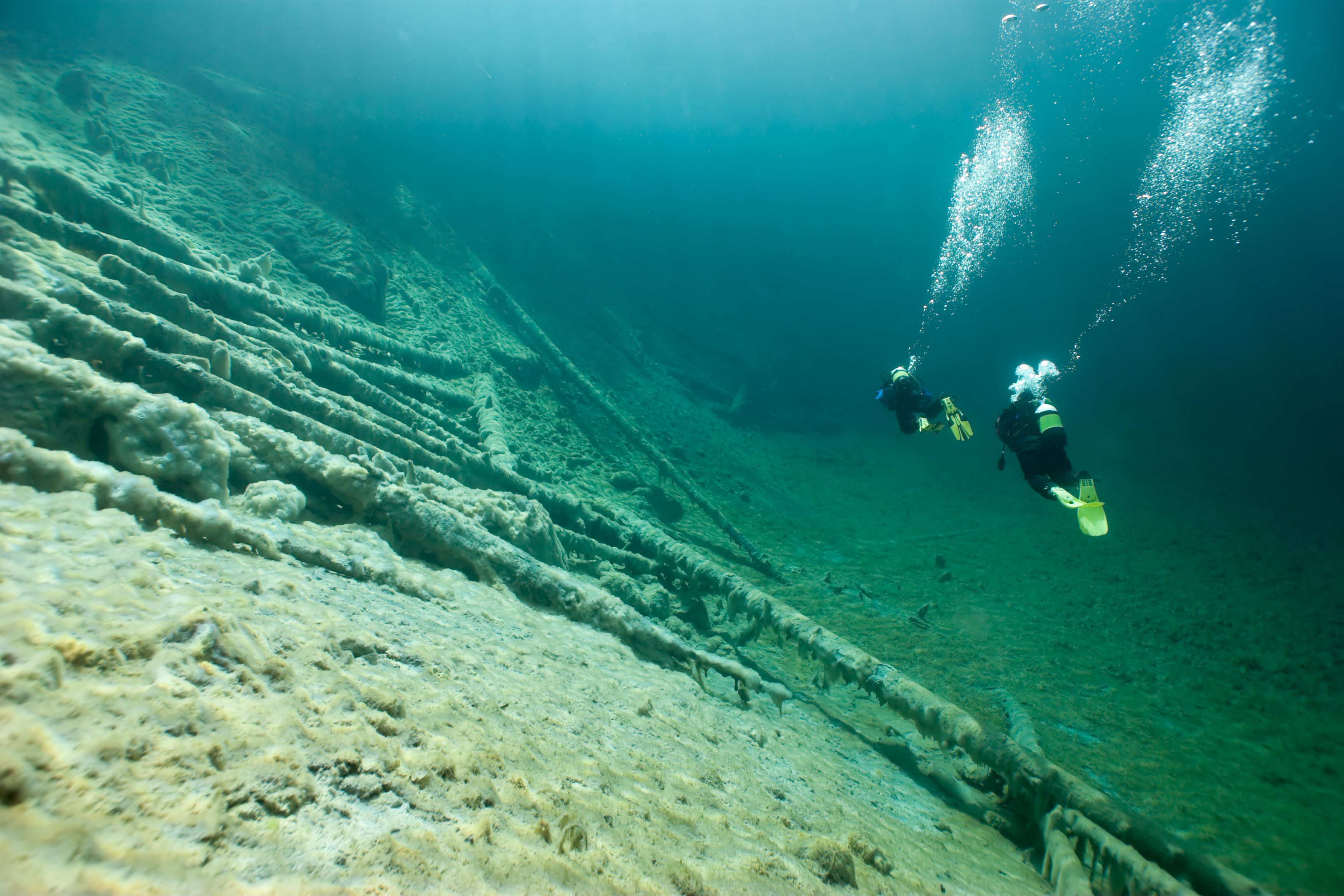Explorers Uncovered an Ancient Roman Marble Floor--at the Bottom of the Sea
Crews are restoring the 2,700-square-foot underwater treasure.
BY TIM NEWCOMB
PUBLISHED: JUL 19, 2024 8:30 AM EDT

The Submerged Archaeological Park of Baia, located off the coast of Naples, continues to reveal ancient Roman splendors.
Archaeological crews working underwater discovered and restored an ancient marble floor from a Roman villa lost to the sea.
Volcanic activity along the coastline submerged ancient cities, which explorers are still discovering underwater.
Finding remnants of ancient Rome lost to time near the Naples coast doesn’t require shovels or pickaxes. Instead, explorers are strapping on scuba gear to dive far beneath the ocean surface to look for the submerged remains of the Roman empire. And the latest find, discovered in the Gulf of Naples, includes a restoration of a roughly 2,700-square-foot marble floor built toward the end of the Roman Empire as a reception room for a traditional villa in the city of Baia.
Baia, in the Phlegraean Fields off the coast of Naples, was once a holiday getaway for ancient Romans. Near both commercial and military ports like Capo Miseno and Portus Julius, respectively, the area thrived with activity. But then the Earth moved (well, there were military conflicts too, but that’s not relevant to the underwater history). Credited to the volcanic volatility in the area, portions of the coast started sinking, taking with it ancient Roman ruins of imperial baths, statues, mosaics, and, of course, marble floors.
The Archaeological Marine Park of Baia now protects eight underwater sites, popular for scuba diving, with some even close enough to the surface for snorkelers to enjoy.
With thousands of marble slabs assembled to create an intricate geometry, the floor produces a stunning underwater scene.
More:
https://www.popularmechanics.com/science/archaeology/a61626404/ancient-roman-marble-floor-underwater-naples/
